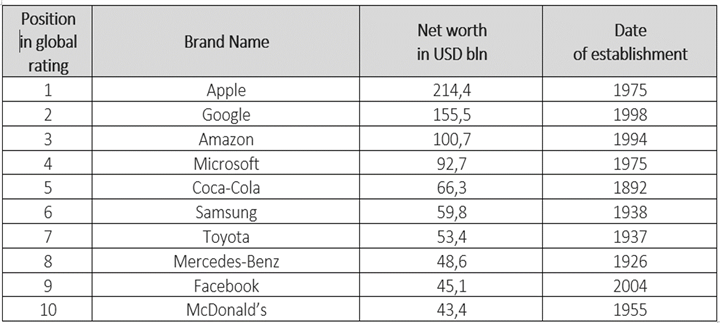CoolTool Blog

What is a Strong Brand?
We are surrounded by brands 7 days a week, 24 hours per day. The contemporary culture of consumerism encourages not only companies to create new brands, but non-commercial organizations, authorities, and even individuals. From yogurts to political parties and whole cities – everything is branded nowadays. A brand is the new identity of the 21st century and anyone who wants to stay relevant whether, in business, career or personal life has to comply. And while some brands struggle to gain momentum and become visible, others skyrocket to the top very fast, successfully outperforming competitors for decades. Of course, such success doesn’t come overnight. There are certain pillars underpinning strong brands. Let’s take a closer look at what Byron Sharp, the renowned professor of Marketing Science suggests in this regard.
What is a brand
The brand is a set of majorly intangible assets transmitting particular emotions and associations to consumers which resonate with their state of mind and make them adopt purchase decisions in their favor.
According to Mr. Sharp, segmentation of customers, positioning of the brand against competitors and other similar brand development efforts are a waste of time and money. What really matters is those simple and consistent messages communicated by the brand which are easy to remember and trigger an emotional response from customers. The value of a truly successful and popular brand is formed by the intangible emotional component, which can’t be measured. Emotional appeal is a crucial part of any brand since it makes people adopt purchase decisions in its favor.
Characteristics: how to recognize a strong brand
Strong brands have several distinctive features, which make them stand out among competitors and successfully lead in their industries:
- Distinctive brand assets – these are things appearing first in mind when a customer thinks about the particular product. These are the first associations that pop up in a consumer’s mind when he/she is confronted with a certain need or situation. For instance, you are thirsty and the next thing you think about is a cold can of Coca-Cola. Logos, colors, packaging, sounds, and other similar things can be identified as distinctive brand assets.
- Accessibility and targeting. Truly successful brands try to make themselves accessible to all categories of customers. Their targeting efforts consist not in narrowing their focus down to particular groups of customers, but in communicating with every existing group of customers in the most efficient and appealing way. Such an approach enriches successful brands whose major asset is robust customers’ databases which are the key driver of growth.
- New customers are no less important than loyal ones. According to Mr. Sharp investing in the attraction of new customers is more cost-efficient than spending money on retaining existing ones. The thing is that people loyal to one brand can easily purchase the same products of competitors. It means that people can easily wear Nike sneakers while purchasing a new pair of New Balance.
- Be always on. In order to stay relevant, the brand has to be always available to its customers in the most popular communication channels. Marketing consistency and permanent presence are more important for sustainable brand growth than viral advertising or promotion campaigns.
- Be where your customers buy. Not only information about your brand should be accessible for customers 24/7, but your products as well. Thus, it’s crucial to sell where your customers are and ensure that there is no shortage of your product because one negative purchase experience in the social media era can cost you far more than simply one dissatisfied customer.
Examples: What are the strongest brands
We bet that while you were reading about the features of strong brands, several brand names already popped up in your mind. Let’s check, whether your list of top brands corresponds to the rating of Top 10 biggest global brands.

Difference between a strong brand and a weak brand
The brand itself can't be weak but its marketing can be. There are promising brands that struggle to get the attention of the audience even if they have a good, qualitative product. There might be numerous reasons for such failure – from a poor brand name or logo which doesn’t provoke relevant associations, too weak communication strategy which doesn’t increase the brand awareness. But usually, all these reasons are acting in combination.
If to summarize what a weak brand is with the help of Mr. Sharp’s principles, then you will see that such brand:
-> Doesn’t have a consistent marketing strategy and remains silent in important communication channels;
-> Doesn’t explain how it fits the consumers’ lifestyle;
-> Struggles to catch the attention and focus of customers due to poor quality of distinctive brand assets;
-> Doesn’t capitalize on existing associations of customers which can make it easily recognizable and “buyable”;
We hope that the proposed concepts of successful branding will make you rethink your approaches to the development of your brand and help you better capitalize on its assets. Anyway, good methodologies in combination with innovative behavioral tools are able to check the brand comprehensively and uncover its strong and weak sides.

